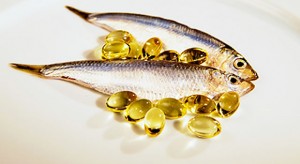It was not that long ago that supplements were viewed in the same light as voodoo, mysticism, and the power of positive thinking (also called the placebo effect.)
 But now the evidence is undeniable: these things WORK, and make a significant difference in the management of arthritis.
But now the evidence is undeniable: these things WORK, and make a significant difference in the management of arthritis.
Cartilage builders:
Remember how in part one, we talked about the vicious cycle of arthritis? Cartilage damage causes inflammation, which damages cartilage, which causes inflammation etc etc. We have already talked about one side of this story: the inflammation. If you decrease that, you can break the cycle.
But there is another side to the story too: the cartilage. If you can get the cartilage in better shape, then you get less of the damaged cartilage signal that makes inflammation in the first place.
Supplements such as Glucosamine, chondroitin, and the injectable PS-GAGs (Polysulfated Glycosaminoglycans… try saying that 5 times fast) are building blocks. They provide the necessary ingredients for the synthesis and repair of cartilage, and also for joint fluid. The inflammatory chemicals damage joint fluid too, so that it loses its cushioning and lubricating properties.
These building blocks have another effect, that while not as well understood is also beneficial: they cause the blood vessels in the bone underneath the cartilage to open up, delivering more oxygen and nutrients to the cartilage that is labouring to repair itself.
A different sort of building block for cartilage is the element sulfur – it plays a role in crosslinking the sugar-protein strands that give cartilage its structure. Many joint supplement mixes include MSM (Methyl Sulfonyl Methane) as a sulfur donor.
Omega-3 Fatty Acids
 Inflammation happens when various chemical signals cause the swelling, heat and pain that define it.
Inflammation happens when various chemical signals cause the swelling, heat and pain that define it.
We have talked already about decreasing these signals by blocking the enzyme that generates the chemicals (with the medications called NSAIDs).
We can also decrease the signals by tampering with their ingredients. Fatty acids are the raw ingredients for making these chemical signals, and one of the most significant ones for making inflammatory mediators is an omega-6 fatty acid called Arachidonic acid.
The enzymes that process Arachidonic acid, though, can also take up different ingredients. When they do, they follow a different production pathway with different end products. If we keep the enzymes busy with the omega-3 fatty acids EPA (Eicosapentanoic acid) and DHA (Docosahexanoic acid), they produce end-products that are less inflammatory, some even anti-inflammatory.
These two fatty acids (EPA and DHA) are at high levels in marine fish oils.
Now while the “bad guy”, Arachidonic acid, is an Omega-6 fatty acid, there are some “good guy” Omega-6’s too. GLA (gamma-linolenic acid) can step into and alter the chemical pathway similar to the way EPA does. GLA is found in safflower oil, evening primrose oil, blackcurrant seed oil, borage oil, and hemp seed oil.
Anti-oxidants:
While the chemical signals already discussed are the “soldiers” in the inflammatory battle the body is waging in the joint, oxidized components called Free Radicals are the bullets they use. If you shoot a free radical at a bacterial cell membrane, you will oxidize its molecules (called phospholipids) and poke a hole in it. Unfortunately, mammal cell membranes are made of phospholipids too… This means there is a lot of collateral damage in this pitched fight against the (often imaginary!) bacteria.
An oxidized molecule such as a free radical has an extra electron. An anti-oxidant is something that can take away the extra electron, and render that molecule neutral.
- Vitamin C – Many Joint Supplement formulas contain Vitamin C (Ascorbic acid), which is an effective anti-oxidant. While this is a useful ingredient for humans, who are incapable of making their own Vitamin C, it is not so important for cats and dogs; they make vitamin C on their own just fine, thank you very much.
- Vitamin E – this is often included in fatty acid supplements, not so much for its benefits to the patient as to prevent the supplement’s oils from oxidizing (oxidizing of oils and fats is also know as “going rancid”).
- Manganese – this element is sometimes included in joint supplements, because it serves as a co-factor for some of the important anti-oxidant enzymes.
